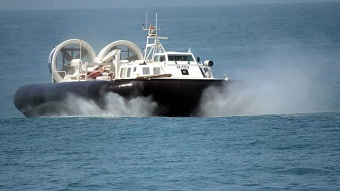Twelve years after the 26/11 terror attacks of 2008, Mumbai’s security apparatus has seen a sea change with Indian Coast Guard standing out as one of the key maritime security agencies. From a meagre 74 vessel to patrol the 7,500 kilometre coastline of India, the force is on its way to become a 200-vessel strong force.
In 2017, the Centre approved a Rs. 31,748 crores, five-year programme to add to the Coast Guard’s resources. “This has seen the Coast Guard fleet of vessels grow 134 ships which are operational. Fifty seven ships are at various stages of construction at different Indian shipyards. The air wing too has increased from 44 aircraft in 2008 to 58,” said a spokesperson from Indian Coast Guard. It has also added another air station at Ratnagiri to effectively patrol the sea. “The air station at Ratnagiri is operational and is likely to be commissioned soon,” said the spokesperson.
With a mandate to patrol the sea between 12 nautical miles and 22 nautical miles from the coast, the force has augmented its air and surface fleet to a large extent. From a small posse of 5,000-odd personnel, the strength of the force stands at 12,000 and it plans to add another 8,000 personnel. After 26/11, the Navy was made the nodal agency for 15 central, and state agencies to coordinate coastal security. Four joint operation centres were set up at Mumbai, Visakhapatnam, Kochi and Port Blair. The Navy now forms the first line of defence and is on constant alert monitoring the sea through aerial surveillance and patrol.
Sagar Prahari Bal, an agency dedicated to coastal security, has been formed comprising personnel drawn from the Navy. The Sagar Prahari Bal and CISF personnel have undergone training at INS Chilka in Odisha, a premier establishment for the Indian Navy sailors.
The Navy has commissioned an unmanned aerial vehicle squadron at Porbandar in Gujarat which monitors infiltration on the western coast. Apart from this, at least one aircraft at each of the Naval air stations remains on alert mode to take off within four minutes and at least one battleship is in alert mode, ready to respond to any situation within 30 minutes.
Meanwhile, Mumbai’s internal security too has seen a much-needed upgrade in the form of hi-tech Close Circuit Television (CCTV) cameras being set up and the Mumbai Police getting a state-of-the-art control room. “The monitoring is either general or incident-based, depending on the type of activities. The network of CCTV cameras has also helped in bringing down petty crimes,” said a senior IPS officer. A proposal has also been mooted to set up special target rooms at 35 locations along the coast which will house specially trained marine paramilitary force personnel.





